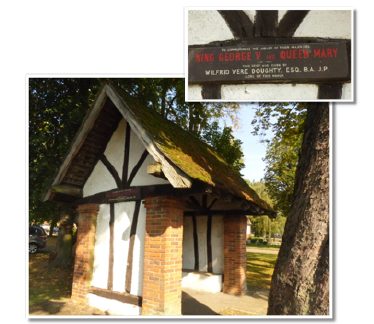Ickleford Neighbourhood Plan 2022 - 2035 Submission Version March 2023
8. Historic Environment
8.1. 88% of respondents to the questionnaire thought it very important to minimise the impact of development on historic buildings and the conservation area to conserve the Parish's historical past and heritage for the future.
8.2. Archaeology in the Parish is widespread and there are several designated archaeological areas. These historic assets are sufficiently protected by Policy HE4 of the Local Plan.
Conservation Area and Listed Buildings
8.3. The village has a great variety of historic buildings in style, age and building materials. The Parish has over 30 Grade I and Grade II listed structures and a conservation area located in the centre, covering an area across Arlesey Road, Turnpike Lane and Chambers Lane. Most of the Parish's listed heritage can be found within the conservation area, with some farmhouses and barns extending to the north and south of the area. Many of these structures are cottages and farmhouses of significant architectural and historical value built between the 16th and 18th century. A key landmark in the village is the Grade I listed Church of St Katharine, which was first built in the 12th century and was restored by the Parish in 1859. Photographs of each building can be found in the Ickleford Design Codes document.
8.4. The centre of the village was designated as a Conservation Area in 1979 with an updated Conservation Area Statement being published in 2019 by NHDC. The Conservation Area Statement sets out a number of important historic features and buildings within the Conservation Area including green spaces and trees which need to be respected.
8.5. These assets are protected from harmful development by the NPPF paragraphs 189 – 196 which require that great weight is attached to the asset's conservation and that clear and convincing exceptional justification would be needed to justify any loss or harm to the asset. Local Plan Policy HE1 also protects listed buildings from harmful development.
8.6. It is expected that new buildings will be designed so as to respect the bulk, massing, height and orientation of listed buildings in close proximity to the site, but can be designed in such a manner as to add to the varied character of the parish.
Local Heritage Assets
8.7. Neighbourhood Plans may identify important heritage assets which are not already protected by listing. These are known as non-designated heritage assets. The buildings and features identified which may not be of sufficient architectural or historic merit to justify listing, are an important part of the character of the Parish. The policy will help to ensure they are retained and respected if new development takes place which may affect them or their setting.
8.8. The non-designated heritage assets included in this plan are:
- The Icknield Way Path/Trail, the best-known iron-age track across England, which forded the river at Ickleford;
- The Village Hall, a striking building that has been an important focus for village activities since 1925;
- The bus shelter on Upper Green, built to commemorate the jubilee of King George V and Queen Mary, with the historic title 'Lord of the Manor' on its inscription.
8.9. Applicants must explain, in a Design and Access Statement and/or Heritage Statement, how the proposal will address these requirements.
(1) Policy HE1: Protecting and Enhancing Local Heritage Assets
All development proposals affecting identified local heritage assets will be required to take into account the character, context and setting of the assets. Development should be designed taking account of local styles, materials and detail. The loss of, or substantial harm, to a local asset, will be resisted unless exceptional circumstance is demonstrated.
Identified Heritage Assets include:
- Icknield Way Path/Trail (Annex 5)
- The Village Hall (Annex 6)
- The commemorative bus shelter on Upper Green, and its inscription (Annex 6)
